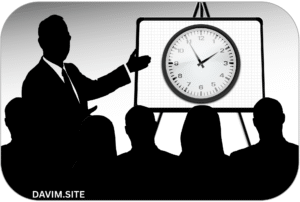Businesses are continuously seeking methods to raise operational efficiency, employee happiness, and productivity in the fast-paced work environment of today. Flexitime, a flexible approach to working hours that lets staff members choose their schedules within certain bounds, has been very popular recently. Flexitime Manager, a tool or job meant to apply, monitor, and maximise flexible work schedules, is fundamental to this trend.
This post will go over what a flexitime manager is, why it’s crucial, how it helps companies and workers, and how you could effectively use one in your company.
What Is a Flextime Manager?
A flextime manager can refer to either:
-
A person (usually an HR professional or team leader) responsible for managing flexible work schedules, or
-
A digital tool or software that helps businesses automate and streamline flextime policies and time tracking.
The flexitime manager ensures the fulfilment of employee demands while simultaneously aligning work schedules with corporate objectives. It lets employees select their start and finish times as long as they satisfy their job criteria and main business hours, therefore striking a mix between flexibility and responsibility.
Why Is a Flextime Manager Important?
Flextime is more than a perk — it’s becoming a key differentiator in employee retention and attraction. As workplace dynamics evolve, companies that resist flexible work options risk falling behind.
A flextime manager helps:
-
Prevent scheduling conflicts
-
Maintain team productivity
-
Track time and attendance accurately
-
Ensure legal compliance with labor laws
-
Encourage employee autonomy and responsibility
Moreover, companies embracing flexible scheduling through effective management often report higher job satisfaction, lower turnover, and increased productivity.
Key Benefits of Implementing a Flextime Manager
1. Improved Work-Life Balance
Improved work-life balance is the most obvious and immediate advantage of flexitime. Workers may control personal responsibilities, avoid taxing commutes, and operate at their most productive times.
By setting guidelines and limits for schedule changes, a flexitime manager makes sure that this adaptability does not compromise corporate productivity.
2. Enhanced Productivity
With a flextime manager overseeing operations, teams can work during their most productive hours. Early risers can start early, while night owls can work later. This personalized approach boosts focus and reduces burnout.
3. Reduced Absenteeism
Allowing employees to manage their own time can lead to fewer sick days and unplanned absences. Flextime managers can monitor attendance trends and intervene if patterns of abuse occur, striking a healthy balance between freedom and structure.
4. Greater Employee Retention
Employees value trust and flexibility. By offering flextime options managed professionally, organizations can dramatically improve their retention rates. A flextime manager provides the framework to make this possible without sacrificing operational consistency.
5. Better Talent Acquisition
In a competitive job market, top talent seeks employers who offer more than just salary. Flextime is often cited as a top priority for job seekers, and a company with a robust flextime management system becomes more attractive to potential hires.
Manual vs. Automated Flextime Management
Manual Flextime Management
Traditionally, team leaders or HR managers would manually approve schedule changes, track working hours, and ensure adequate staffing levels. While this may work for small teams, it becomes increasingly difficult and error-prone as the company scales.
Automated Flextime Software Tools
Many organizations now use flextime manager software solutions that automate the entire process. These tools typically offer:
-
Time tracking
-
Schedule templates
-
Calendar integrations
-
Notifications and reminders
-
Reporting and analytics
-
Mobile access for employees
Some popular tools in this space include Time Doctor, Toggl Track, Clockify, and Hubstaff.
Features to Look for in a Flextime Manager Tool
When choosing a flextime manager software, make sure it includes:
1. Customizable Schedules
Look for a platform that lets employees choose working hours while giving managers visibility into overlapping times and availability.
2. Real-Time Monitoring
Live dashboards and attendance monitoring help ensure that everyone is meeting their required hours without micromanagement.
3. Integration with HR and Payroll
Seamless integration with HR systems and payroll helps prevent administrative headaches and ensures that time worked is paid accurately.
4. Reporting and Insights
Detailed reports allow leadership to spot trends, such as peak working hours or underperformance, and make informed decisions.
5. Mobile Access
In today’s mobile world, employees and managers alike benefit from being able to view, adjust, or approve schedules on the go.
Best Practices for Implementing a Flextime Manager
Implementing flextime successfully requires both cultural and operational adjustments. Here are key tips to ensure your flextime management is effective:
1. Establish Clear Policies
Even with flexibility, boundaries are necessary. Set clear guidelines about minimum working hours, core collaboration times, and expectations around responsiveness.
2. Educate Employees
Train staff on how to use flextime systems, what the rules are, and how to communicate effectively with their teams.
3. Prioritize Communication
Encourage open communication to prevent isolation. Weekly check-ins, collaboration tools, and clear feedback mechanisms are essential.
4. Monitor and Adjust
Use your flextime manager’s data insights to make ongoing adjustments. Identify what’s working and where there’s room for improvement.
5. Avoid Micromanaging
Trust is the foundation of successful flextime implementation. Avoid constant check-ins or surveillance, which can damage morale. Instead, focus on outcomes.
Common Challenges and How a Flextime Manager Solves Them
1. Coverage Gaps
Challenge: Some teams might end up understaffed during key hours.
Solution: Flextime manager tools offer scheduling views that help prevent overlap issues and ensure required coverage.
2. Abuse of Flexibility
Challenge: Some employees may misuse flexible hours.
Solution: Set minimum hours and track time through digital systems that send alerts or reports when anomalies are detected.
3. Coordination Difficulties
Challenge: Teams may struggle to collaborate with varying schedules.
Solution: Use shared calendars and establish core hours when everyone is expected to be available.
4. Compliance Risks
Challenge: Mismanagement can lead to violations of labor laws.
Solution: Flextime management software helps track hours and break times automatically, maintaining compliance.
How Flextime Management Affects Company Culture
A properly managed flextime program signals that a company trusts and respects its employees. It can lead to a cultural shift toward:
-
Autonomy over micromanagement
-
Outcome-focused performance
-
Increased diversity and inclusion, as it accommodates different lifestyles and personal needs
However, it’s crucial that flexibility is balanced with accountability. A flextime manager, whether human or digital, serves as the linchpin that keeps this system running smoothly.
The Future of Flextime Management
As remote work, hybrid models, and global teams become the norm, flextime management will continue to evolve. We’ll see increasing use of:
-
AI-powered scheduling
-
Predictive analytics
-
Behavior-based tracking
-
Seamless integrations with productivity tools like Slack, Zoom, or Microsoft Teams
Companies that embrace these changes and invest in a dedicated flextime manager will be better positioned to thrive in the modern workplace.
Conclusion
Whether as a person or a technology solution, the idea of a flexitime manager is no longer a luxury; it is a need in the flexible, employee-driven work environment of today. Companies may get the double advantages of better performance and happier staff by using disciplined yet flexible scheduling systems.
Now is the moment to investigate flexitime management solutions if you want to stay competitive, raise staff retention, and create a better workplace. From tiny enterprises to enterprise-level companies, the correct flexitime manager may significantly affect how work is completed.

